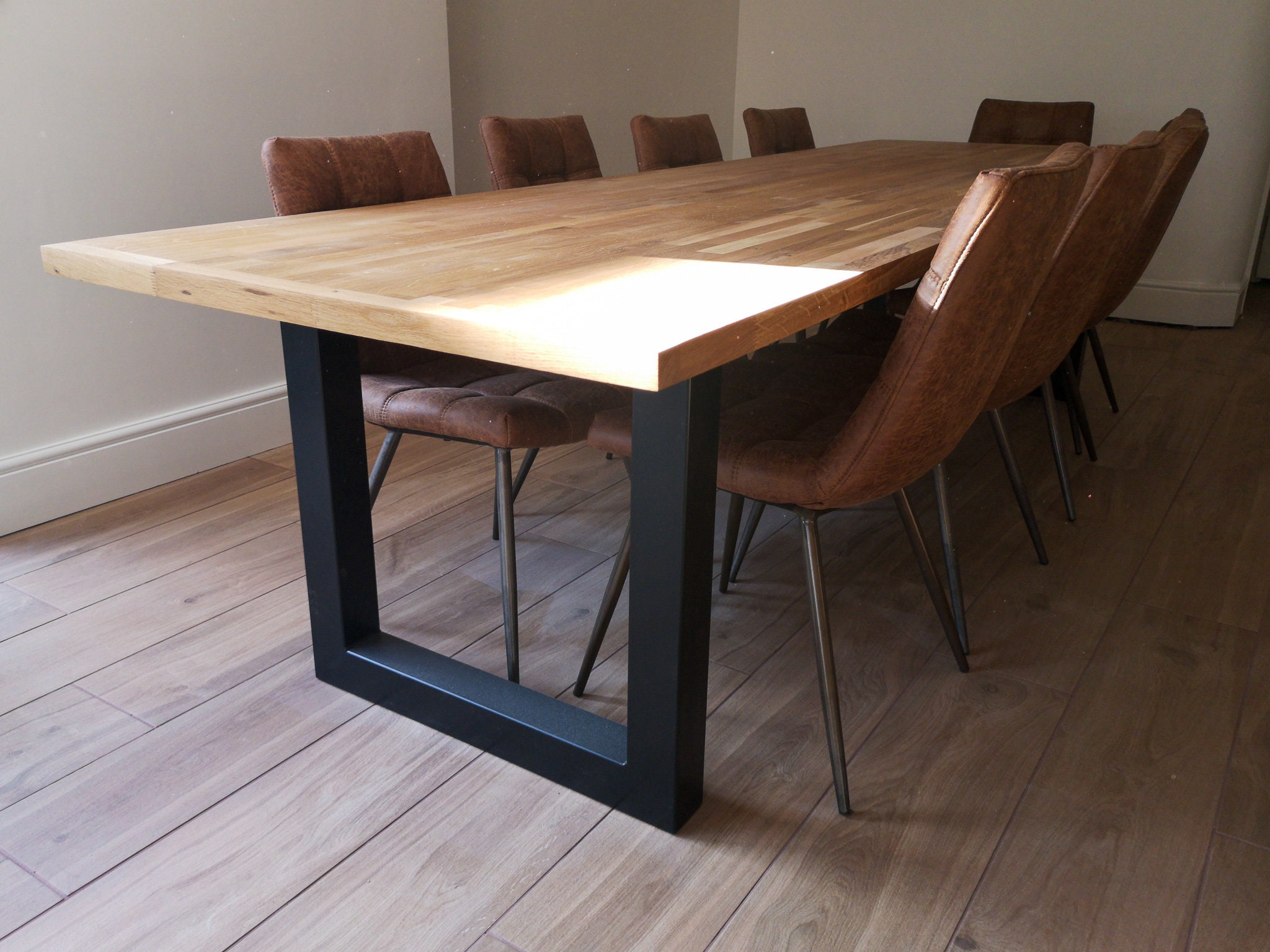Table Legs: Just How to Select the Best Designs for Your Space
Selecting the right eating table legs is critical for both visual and useful consistency in your dining space. Whether your space boasts a streamlined, modern ambiance or leans in the direction of a much more standard atmosphere, the style of the legs can significantly influence the overall look. Tapered legs exhibit contemporary beauty, while transformed legs provide a nod to timeless appeal. Past design, the material-- be it warm timber or smooth steel-- plays a crucial role in establishing the tone. How do you guarantee these elements enhance your existing style while offering the required security? The answer hinges on a balanced approach.
Assessing Your Dining Area Design
Just how do you determine the finest dining table legs for your area? The solution starts with a thorough assessment of your dining space style. A natural style makes certain that your table legs boost the total visual instead than encounter existing components. Beginning by observing the building features of your dining-room. Exist noticeable characteristics such as exposed beams, complex moldings, or minimal lines? These details commonly determine whether a traditional, rustic, modern, or commercial style is most suitable.
Following, take into consideration the existing furniture and design. The materials, shades, and structures within the room play a crucial role. An eating space with sleek, modern-day chairs and metal accents may profit from easy, streamlined table legs. Alternatively, a space loaded with classic pieces and abundant materials could require ornate, sculpted legs.
Illumination additionally affects assumption. Natural light can emphasize specific products and finishes, while man-made lighting can highlight various facets. Finally, account for the room's scale and percentages. Large, open eating rooms can fit larger, more considerable legs, whereas smaller sized spaces need even more delicate, unobtrusive layouts. By carefully examining these variables, you can choose dining table legs that sympathetically mix with your dining space's design.
Popular Leg Styles Discussed

One widespread design is the tapered leg, renowned for its smooth, modern-day look. Next off, the transformed leg features complex spindle-like layouts, typically located in conventional and farmhouse setups.
Cabriole legs, with their distinct curves, are synonymous with French Provincial and Queen Anne furnishings. Their elegant, flowing lines bring a sense of class and historic charm (dining room table legs). For those favoring a robust and simple layout, square legs provide durable support and a tidy, geometric look, perfect for commercial or minimalist spaces
Finally, barrette legs use a retro, mid-century modern-day vibe. Made from metal, these legs are both lightweight and strong, adding a special aesthetic comparison to wood table tops. Recognizing these designs will certainly lead you in selecting table legs that enhance your space's aesthetic and functionality.
Material Considerations

Timber is a timeless option, understood for its heat and adaptability. It is available in different varieties such as oak, walnut, and maple, each offering special grain patterns and colors. Metal legs, frequently made from stainless-steel, iron, or aluminum, provide a modern and industrial look while making sure robust support. They are usually extra immune to damage, making them a sturdy choice.

Various other products like bamboo or rattan offer environmentally friendly choices, bringing an all-natural and kicked back vibe to the dining location. Each product has its advantages and disadvantages, and the best choice will certainly depend on your like it specific demands and preferences.
Balancing Aesthetic Appeals and Functionality
Accomplishing the excellent equilibrium between aesthetic appeals and performance is crucial when picking table legs. While the aesthetic appeal of table legs can considerably boost the total ambiance of an eating space, their functional elements can not be ignored. The design of the legs need to balance with the space's decor, yet they must also give ample support and stability for the table.
Consider the building design of your area. Smooth, modern interiors might gain from minimal, metal legs that use a tidy and inconspicuous look. On the various other hand, conventional setups often complement transformed or sculpted wood legs that include a touch of sophistication and refinement.
Capability includes the stability and resilience of the legs. Trestle legs, understood for their toughness, can supply solid assistance for bigger tables, making them suitable for households or regular entertainers. On the other hand, pedestal legs can provide even more legroom and versatility, permitting for far better seats plans
In addition, the height and positioning of the legs are crucial for comfortable dining. Legs put too much inward might restrain seating, while those too near the edge can limit motion. Hence, thoughtful factor to consider of both visual and functional elements is paramount for an optimum eating experience.
Modification and DIY Options
Modification opens up a world of possibilities for developing dining table legs that are distinctly tailored to your taste and requirements. Particular design aspects, such as turned legs, tapered shapes, or detailed carvings, can be included to mirror your style.
For those likely towards do-it-yourself (DO IT YOURSELF) tasks, producing custom eating table legs uses both a satisfying experience and the chance to accomplish a bespoke visual. Do it yourself fanatics can resource resources and utilize woodworking or metalworking tools to craft legs that fulfill specific specs. In addition, various on-line tutorials and workshops give advice, making the procedure a lot more easily accessible for novices.
Ultimately, whether selecting expert personalization or starting a do it yourself endeavor, the capability to tailor eating table legs makes sure that the end product harmonizes with your interior decoration vision, boosting both performance and visual go now charm.
Final Thought
Choosing the appropriate eating table legs requires cautious factor to consider of the overall design of the dining space, including existing building functions and furniture. Understanding preferred leg styles and material options is important for attaining an unified visual. Stabilizing visual appeals with performance makes sure stability and boosts the eating experience. Modification alternatives better enable a tailored layout. Ultimately, the picked table legs should match the design, offering both visual allure and useful support.